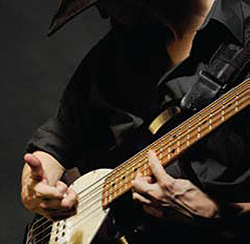
Bring The Mayhem
So for the next bunch of years, everything worked just ducky, until one day, some guy decided to put a 9-volt battery inside the bass and buffer the signal.
Now all of the sudden, instead of the bass producing around 1 volt, the battery powered preamp inside the bass was kicking out 5 to 7 volts.
Then the CEO of the Acme Bass Company had a revelation: “We can do even better—let’s put in a second battery!”
A modern 6-string bass could now deliver a whopping 18 volts of mayhem, and bass players rejoiced. They could overload the front end of “ye old SVT” and finally out-blast that pesky lead guitarist and his lowly Marshall!
All good, expect for one problem: that 18-volt output now overloads the direct box, resulting in a distorted, muddy, no-punch sound in the PA system. Or, if you prefer, it just plain sounds bad.
The solution? Dust off the old passive direct box, connect it up and bingo, great tone – the thud is back.
Phantom Solution
Here’s the deal. Early active direct boxes were powered by batteries and in fact, some still are. But the problem with batteries is that they go dead… usually right in the middle of the second set.
So some years ago, DI manufacturers started to use phantom power as a means to supply the needed voltage and current to the active DI box (buffering amplifier).
But phantom power, invented by Dr. Neumann as a means to supply a polarizing voltage to his condenser microphones, was never intended to be a power source for an amplifier. And without current, you do not get headroom.
Think of a bass playing through a miniature guitar amp – turn it up, and it distorts like crazy. DI boxes do exactly the same. Without headroom, high-output bass signals will cause the buffering amplifier in the DI to distort.
But remember, back then, basses were all passive so for the most part, so they worked fine with regular phantom power as the buffers only had to process 1 to 3 volts. The advent of active basses with their huge output levels changed the rules.
Two Groups
So the rule of thumb is that for a high-output bass that already has a built-in buffer, a passive direct box will likely do a great job—the bass will produce the drive. On the other hand, for a low-output passive bass, an active DI will leave the bass sound unaffected while generating the drive for the PA system.
Keep in mind that the sound quality of DI boxes depends on the circuit design and parts that are being used. Better designs focus on eliminating all types of “bad” distortion such as harmonic, phase and inter-modulation distortion. These designs are then categorized into two groups.
Some direct boxes are designed to transfer the signal without artifact or distortion so that the original sound of the bass is delivered as purely and naturally as possible, while others, such as tube DI boxes, tend to be designed to “color” the sound with “good” distortion to create new bass tones and exciting textures. Both are useful, depending on the desired outcome.
Peter Janis is president of Radial Engineering.
